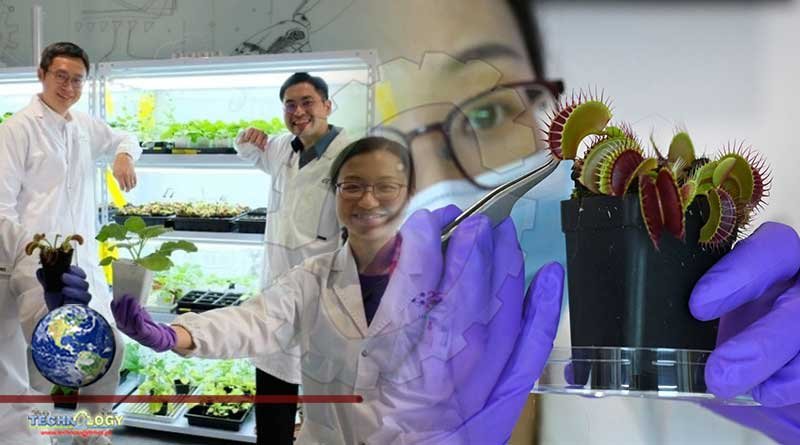In Singapore, researchers have attached plants to electrodes that are able to detect the weak electrical signals that plants naturally emit.

In Singapore, researchers have attached plants to electrodes that are able to detect the weak electrical signals that plants naturally emit.
They used this technology to induce a flycatcher, a carnivorous plant, to close its two-lobed “jaws,” following a signal from a smartphone.
Then they attached one of the lobes to a robotic arm to snatch a thin piece of half-millimeter wire, then grab a small object when it fell.
The technology is still in its infancy, but researchers believe it could be used in the future to design “plant robots” that can handle things that are too fragile for the rigid arms of conventional robots.
“These types of natural robots can interact with other synthetic robots to create hybrid systems,” Chen Xiaodong, author of a study published by Nanyang Technological University in Singapore, told AFP.
But there are still many problems to be solved. For example, scientists can stimulate the flycatcher’s “jaws” to close, but they cannot open it yet, a process that normally takes 10 hours or more.
Illness alert
The system can also detect weak signals emitted by plants, which leads to the possibility of alerting growers at an early stage when their plants are sick.
“By observing the electrical signals of plants, we may be able to detect potential distress signals and distortions,” Chen notes.
“Farmers may realize that the disease is spreading, even before the obvious symptoms appear.”
Scientists have long known that there are electrical signals emitted by plants, but their irregular and soft surface makes it difficult to mount sensors.
Researchers at NTU have designed electrodes that have a soft feel of plastic films and can be attached around the plant to more reliably detect signals.
It’s affixed to “thermogel,” which is a low-temperature liquid that dissolves at room temperature.
Other researchers are following this path, too.
In 2016, a team from the Massachusetts Institute of Technology (MIT) used spinach leaves as detection devices capable of sending an email to scientists when explosives are discovered in their basement.
Researchers have placed carbon nanotubes that can emit a fluorescent signal when plant roots detect nitroaromatic, a substance often found in explosives. The signal was read by an infrared camera, which sent a message to the scientists.
Originally published at Your Decommissioning News
